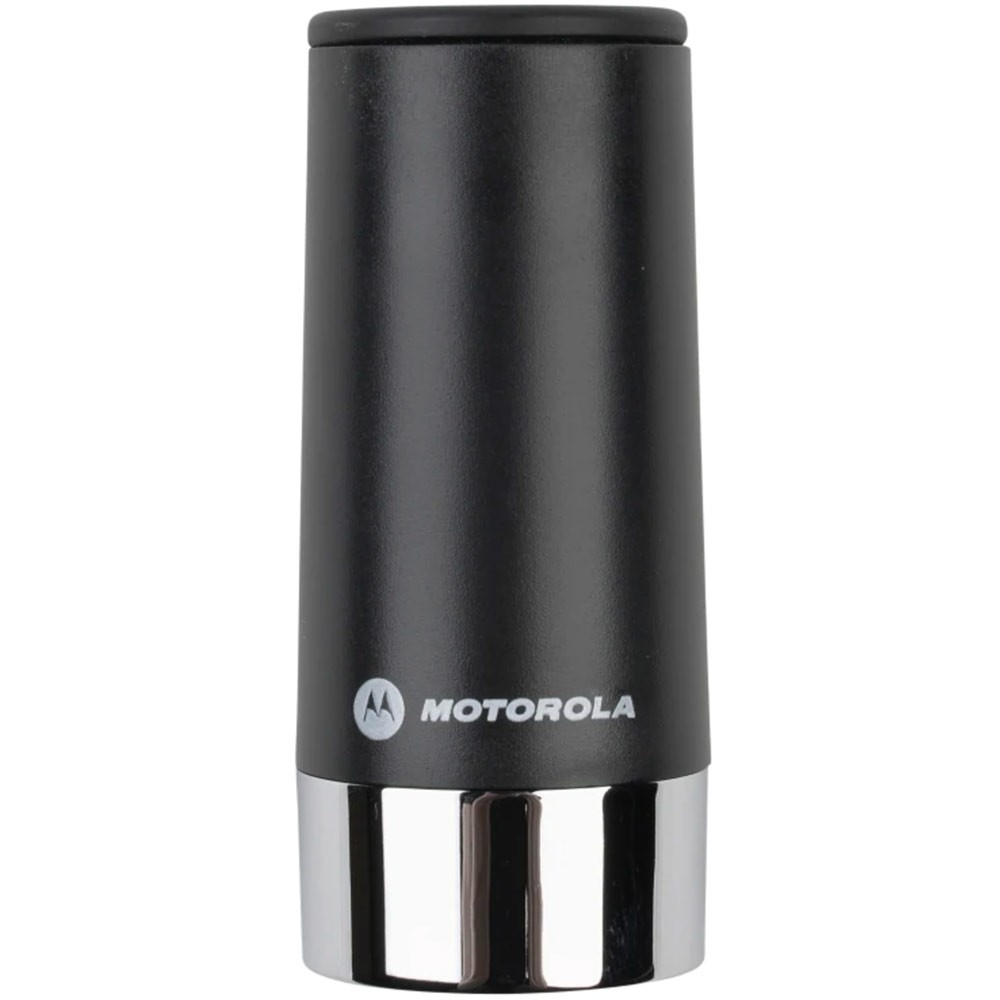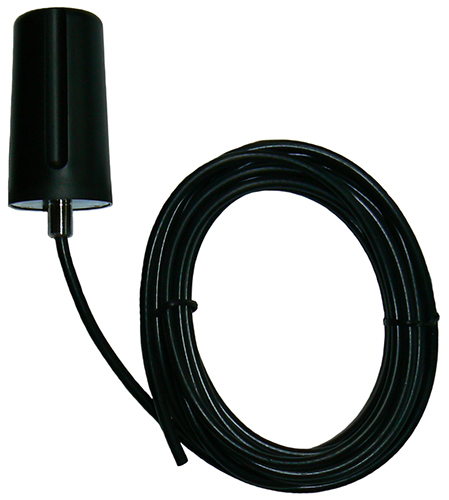Low Profile 2 Meter Slot Antenna
I purchased this antenna from Michael and have been using it in a HOA-restricted community–it is great for low profile, but high performance on both the 2 meter and 70 cm bands. I am hitting very distant repeaters consistently, in spite of being in a tightly-packed residential area with homes and trees presenting obstacles to overcome.
Build a 2 Meter, 5/4 Wave Antenna |
By Mike Martell N1HFX |
Get high performance from a small package with this low-profile antenna made from copper pipe. Figure 1 - The 2-meter slot-cube antenna con- structed from ½-inch copper pipe and plumbing fittings. The two horizontal loops act as planes with the gap between the two vertical connecting elements forming the slot. 2-meter Yagi—complete with mounting hardware—for $20. The antenna offers a gain of about 10 dB, is lightweight, mechanically strong and rivals the performance of similar commercial antennas. The antenna’s low cost is made possible by modifying a RadioShack FM broadcast receiving antenna (RS 15-2163). For $19.99, plus tax, you get a 70. Hidden antennas, antennas for low space category is a curation of 62 web resources on, Concealed DSS J-Pole, The Galaxy dipole, Balcony Antenna for 7 10 14 MHz. Resources listed under Stealth Antenna category belongs to Antennas main collection, and get reviewed and rated by amateur radio operators.

Many RASON members truly enjoyed last month's collinear antenna. This month I decided to build a 2 meter 5/4 wave antenna. This antenna is unique in that it is enclosed entirely in 3/4' PVC which makes the design a little more complicated. The primary problem is that PVC tubing has a significant velocity factor which causes RF to slow down. This means that an antenna encased in PVC will normally need to have it's physical length reduced by about 19%. To further complicate the design, a 5/4 wave antenna's impedance has a highly inductive component which must be tuned out to get a good match. Fortunately, the design in Figure 1 solves all of these problems.
This antenna is made with the following components:
| About 2 feet of outdoor type 300 ohm TV twin lead (Used for matching system.) |
| About 5 feet of #18 stranded insulated wire (Used for radiating element.) |
| About 5 feet of RG58/U coax |
| One PL259 Connector |
| One PL259 female to female coupler |
| About 8 feet of 3/4' PVC tubing. (normally sold in 10 foot lengths) |
| Two 3/4' PVC end caps |
| About 8 feet of 1/4' hardwood dowel (normally sold in 4 or 5 foot lengths) |
| About 25 small tie wraps |
| Miscellaneous PVC cement, solder, small piece of tubing, etc. |


The twin lead was originally cut for 20 inches with 4 7/8 inches cut back on the braid or ground side. The #18 insulated wire was cut to exactly 57 3/4 inches. The overall length of the antenna assembly is 77 3/4 inches. This indicates a velocity factor of about .81 compared to a normal 5/4 wave 146 Mhz antenna. See calculation below:
234 * 5 / 146 X .81 = 6.49 feet or about 77.88 inches
Now that we have all our parts, lets begin assembly by cutting back the insulation of the coax and the TV twin lead. We will need to cut back the coax to expose the center conductor as well as part of the braid. It is a good idea to lightly thin the braid with solder to prevent any strands from shorting out to the center conductor. Solder the center conductor to one end of the twin lead and solder the braid to the other end off the twin lead as in Figure 1. Notice the braid of the coax is soldered to the shorter part of the twin lead which is left open. This serves as our matching system which adds capacitance to our antenna to offset the inductive component of the antenna. Trim the twin lead to 20 inches and solder about 60 inches of #18 stranded wire to the twin lead as in Figure 1. The insulation should not be removed except as necessary for soldering.

Prepare the 1/4' hardwood dowel by joining two 4 or 5 foot lengths together. The ends can be joined by crimping a 1 inch length of 5/16' aluminum tubing or using a good quality wood glue. Now attach the coax, twin lead and wire assembly to the 1/4' dowel using tie wraps about every 3 inches. Pull the twin lead and wire to keep it as straight as possible. Before attaching the PL259 connector to the coax, drill a hole in one of the PVC end caps and slide it over the coax to prepare for permanent mounting in the PVC. Now attach the PL259 connector as well as any other connectors needed to check SWR. Cut back the open end of the twin lead to about 16 inches as in Figure 1.
Now we are ready for final tuning. Slide the antenna, dowel assembly inside the 3/4' PVC first. All SWR readings must be taken with the antenna, dowel assembly inside the PVC tubing or the antenna will appear electrically shorter than necessary. Check SWR on both the top and bottom edge of the band. If the SWR is higher at 147.995 Mhz than at 144.005 Mhz then the antenna is too long and should be shortened. Cut off no more than a 1/4' at a time of the #18 wire. Also, trim the open end of the twin lead by no more than 1/8' at a time to further lower SWR. Remember the twin lead is simply a matching system which changes impedance and has no real effect on the electrical lengh of the antenna. The final lenghs of the #18 wire and twin lead should very closely resemble those listed in Figure 1. The prototype antenna achieved SWR readings of less then 1.2 to 1 across the entire 2 meter band. Remember to keep the antenna away from metal objects when checking SWR.
After the antenna is properly tuned, trim the antenna dowel assembly to about 7 feet. Leave a few inches of coax attached to the bottom of the dowel so that the mast will be away from the twin lead portion of the antenna when mounted. Trim the PVC tubing to about 7' 2' and cement the top end cap. Double check SWR before cementing the bottom end cap. After SWR has been doubled checked, slide the antenna, dowel assembly into the PVC and cement the bottom end cap. If desired, styrofoam spacers may be used to get a very snug fit. Waterproof the bottom end cap where the coax leaves the antenna. When completed, the antenna should resemble Figure 2.
Low Profile 2 Meter Slot Antenna Booster
When mounting the antenna, use a PL259 female to female coupler. Do not use RG58/U for the entire feed line because it is too lossy. Use good quality RG8/U or similar coax for the feedline. Of course, do not forget to waterproof the female to female coupler. Mount to any mast using standard TV antenna clamps at the bottom of the antenna and keep it high and away from other metal objects for best performance and lowest SWR.
Low Profile 2 Meter Slot Antennas
Although not actually measured, this antenna should give at least 6 dB gain if mounted high enough. Remember, the small diameter of the radiating element has no effect on the radiation resistance. The only real benefit with using a large diameter radiating element is durability and slightly improved bandwidth. This antenna should give many years of reliable performance for a fraction of the cost of a commercial antenna.
Low Profile 2-meter Slot Antenna
DE N1HFX